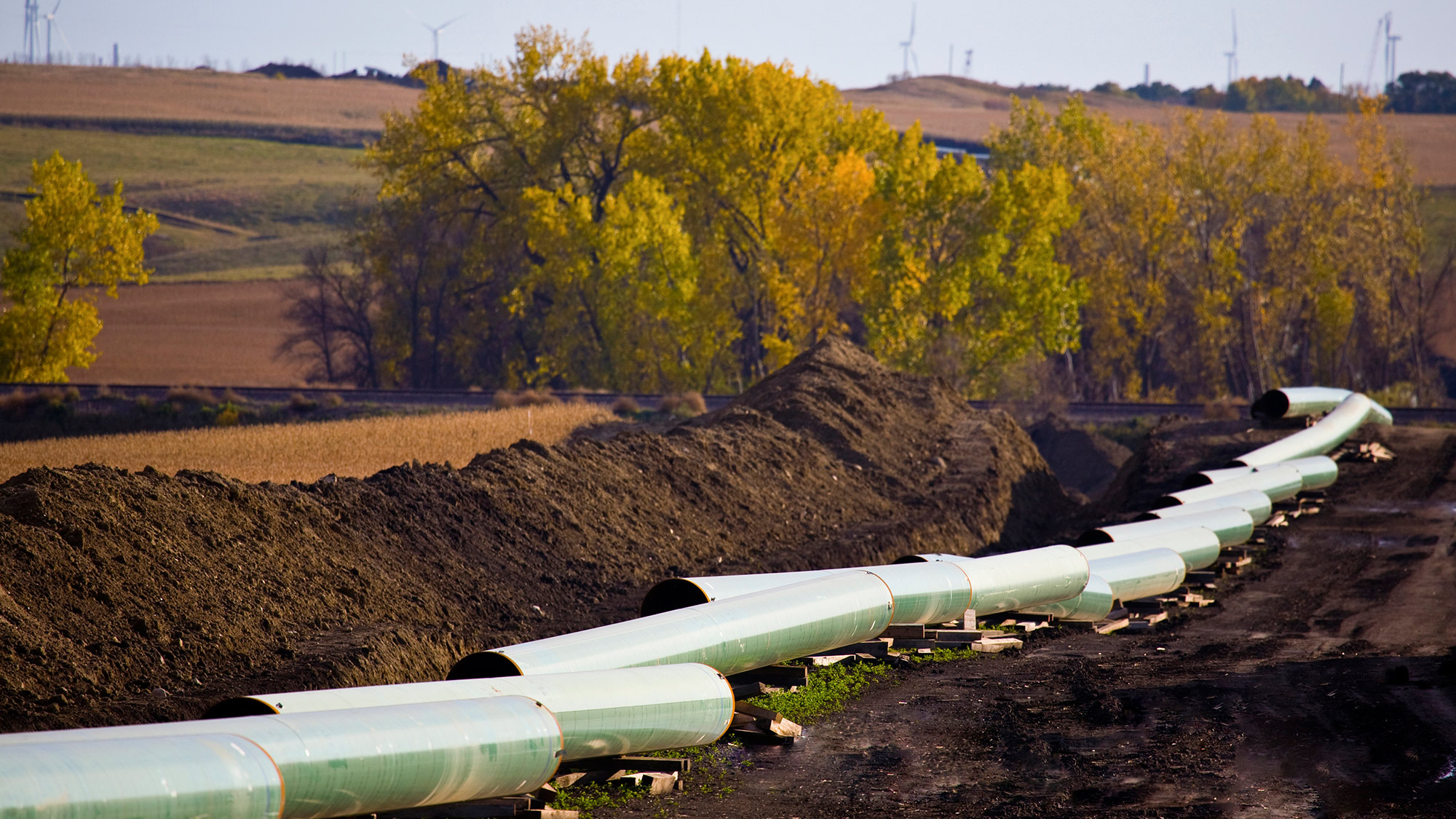It’s Friday, and nothing says Friday like the words “The Final Supplemental Environmental Impact Statement for the Keystone XL Project is out.” Am I right? Let’s just pretend I’m right. It’s out, everyone! Some people might get into conspiracy theories about governmental agencies that release highly controversial documents late on a Friday right before the Super Bowl, but surely those are just theories. Final Supplemental Environmental Impact Statement for the Keystone XL Project party in the house!
The report is a key step in the process set in motion two years ago, when President Obama rejected the initial application by Transcanada to build the northern leg of the Keystone XL pipeline. The pipeline, which would ship tar-sands crude from Alberta to the central U.S., became a lightning rod for protest. Still to come: a broader State Department review of whether the pipeline is in the U.S.’s overall national interest, and then, finally, a decision by Obama himself.
In this process, the Final Supplemental Environmental Impact Statement for the Keystone XL Project (or the KXL EIR for short) serves primarily as fodder for that final decision. The report released Friday largely concludes that Keystone won’t really make a difference to the climate or the environment — which means that it gives Obama one more excuse to say “yes” to the pipeline and one fewer to say “no.”
The KXL EIR was a report whose generation has been destined to occur since the 1969 Santa Barbara Oil Spill led to the creation of the first EIRs (since the beginning, oil has been a theme), but because KXL will cross an international border, the ability to say pipe or no pipe is still the president’s call.
Last summer, Obama said this:
Allowing the Keystone pipeline to be built requires a finding that doing so would be in our nation’s interest. And our national interest will be served only if this project does not significantly exacerbate the problem of carbon pollution. The net effects of the pipeline’s impact on our climate will be absolutely critical to determining whether this project is allowed to go forward.
Some described this as “gnomic utterances.” Others took it as a sign that, since extracting crude from the tar sands does generate much more carbon pollution than other forms of crude extraction, the president might actually not approve KXL if the EIR (or some other president-swaying mechanism) made a strong case that KXL was bad for America.
So now we have the EIR. What does the EIR say? You’re welcome to read all 11 volumes here or the executive summary here, but we’ve also assembled a more concise summary of the EIR talk going around.
The New York Times summarizes the EIR’s conclusion thus: KXL will have a minimal impact on the environment, because even though extracting and burning tar-sands oil creates about 17 percent more greenhouse gas emissions than more traditional ways of sucking oil out of the ground and setting it on fire, companies are so busy sucking oil out of the tar sands that they are going to do so whether they get a special pipe named KXL to do it or not.
Or, as the Times puts it: “The conclusions of the report appear to indicate that the project has passed Mr. Obama’s climate criteria.”
The Times also adds some useful context about the political pressures on Obama. Canada continues to push the president to approve the pipeline, and while Obama has the option of postponing a decision until after the November elections, Republicans only need to win six seats in order to dominate the Senate as well as the House. Approving KXL could protect the reelection campaigns of two vulnerable Democratic senators in the heart of oil country — Mary L. Landrieu of Louisiana and Mark Begich of Alaska.
The Wall Street Journal adds that other Democratic senators up for reelection in November have warned that they will push legislation forcing a decision if Obama keeps failing to make one — and that while Obama could punt the Keystone decision to Secretary of State John Kerry, he indicated to his presidential aides that he won’t do so.
Brad Plumer, over at the Washington Post, gets into the numbers. The pipeline would produce 830,000 barrels of oil, which would add an extra 1.3 million to 27.4 million metric tons of carbon dioxide to the atmosphere each year — the equivalent of 250,000 to 5 million cars on the road. Plumer adds that the EIR is confident that if KXL is not there to carry oil, railroads will be, so not building KXL could increase emissions in the life cycle of tar-sands crude by 28 to 42 percent thanks to the diesel fuel and electricity needed to ship it by truck and rail.
Tom Randall at Bloomberg weighs in with all the reasons that the EIR isn’t exactly a go-ahead signal for KXL. For one thing: Eight other agencies with jurisdiction over parts of KXL — the DOD, DOJ, Homeland Security, and the EPA, among others — will have the next three months add their own opinions on the project.
And there will be protests. “As we showed in 2011,” 350.org wrote in an email to supporters earlier today, “the only time you can count on the president is when you have him completely surrounded. And so it’s up to us to mobilize again, and put the pressure on from all sides.”
Another reason why the EIR might not be all that: The State Department, which prepared the EIR, is also due to release the results of an investigation by the Inspector General into the review’s first draft, which turned out to be written by a contractor who had also done work in the not-too-distant-past for TransCanada, the company that wants to build KXL.
If the investigation finds a conflict of interest, the State Department may be forced to do an entirely new EIR. Party on!



